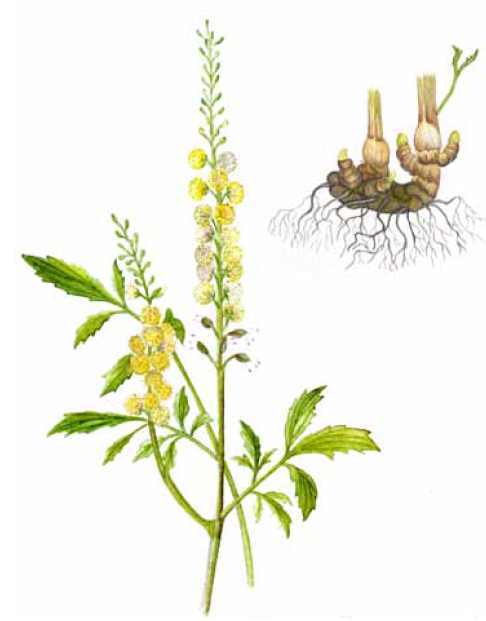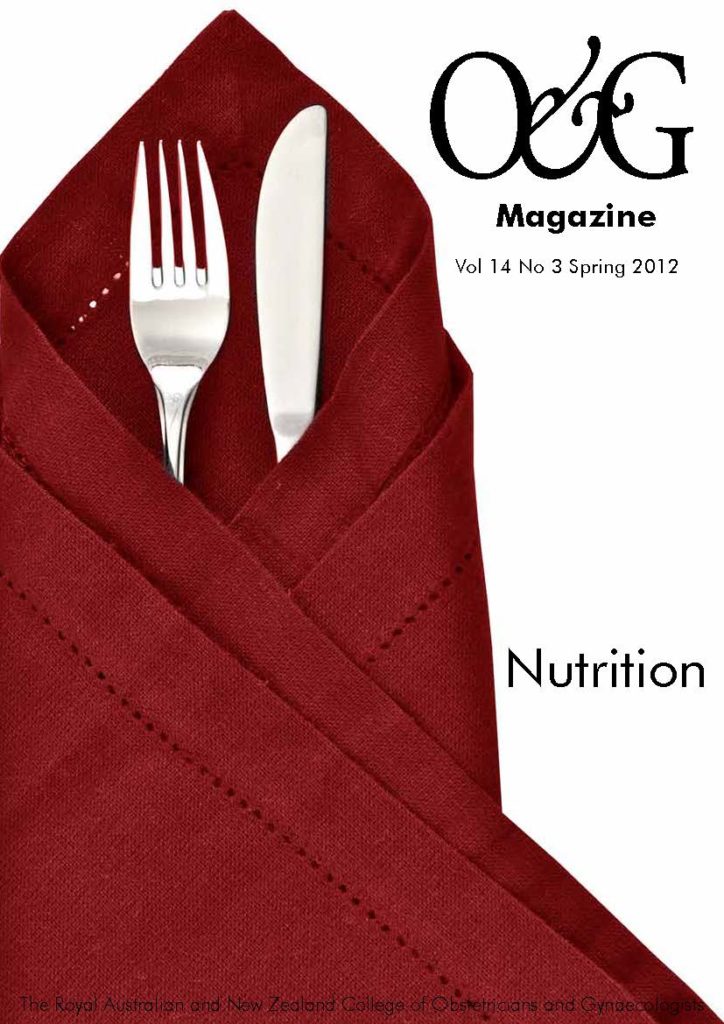An introduction to popular herbs and natural supplements frequently used in women’s health.
Herbs and natural supplements are also known as complementary medicines by many people, although the line is blurring between complementary medicine and just good old medicines. For instance, how do we classify vitamin C or fish oil supplements? For this reason, I will sometimes refer to them as herbs and natural supplements in acknowledgement of the fact they are found in nature (not first created in a pharmaceutical laboratory).
Australians have embraced herbs and natural supplements as a consistent part of their approach to healthcare. A national survey of over 1100 pharmacy customers found over 70 per cent use these medicines and the majority describe them as effective or effective enough. Surveys consistently report that women are the main users of complementary medicines, in particular, women with a higher education and socioeconomic background.
Selecting medicines from a shelf in the community pharmacy or supermarket, via the internet or from the garden shows initiative and meets people’s personal need for autonomy and control in their healthcare management. In addition, herbs and natural supplements fill a gap in practice when pharmaceutical treatments have limited effectiveness, are associated with undesirable side-effects or potential long-term consequences such as an increased risk of cancer. They are sometimes viewed as a ‘softer’ option to address mild symptoms or minor health issues and as something to try before bringing out the big guns and their potential safety issues.
So, what is being used and does it work?
Chasteberry, also known by the Latin name Vitex agnus castus is a popular herbal extract used in the treatment of premenstrual syndrome. It has been prescribed by herbalists and naturopaths for years, partly based on traditional evidence but also on scientific evidence indicating benefits for a range of PMS-related symptoms. Major nutraceutical companies also manufacture commercial preparations that are available over-the-counter in pharmacies.
Chasteberry has been the subject of numerous clinical trials over the last decade.1-5 It is taken orally, either as capsules or liquid drops and found to decrease symptoms commonly associated with PMS such as mastalgia, oedema, constipation, irritability, mood alterations and headache in some women.6 Clinical studies have compared chasteberry to placebo or vitamin B6 for treatment of PMS and compared it to fluoxetine (20–40mg/daily) for premenstrual dysphoric disorder (PDD).
A recent randomised, double-blind, placebo-controlled trial involving 128 women found 40 drops of Vitex taken for six days before menses over six cycles was significantly more effective than placebo (P<0.0001) for alleviating mild to moderate symptoms of PMS.2 In 2010, another randomised, double-blind, placebo-controlled trial of 67 women with PMS found one Vitex tablet daily (40mg) effectively reduced sum symptom scores by at least 60 per cent by the third cycle of treatment. Negative effect, water retention and sum symptom scores were all significantly reduced in the group taking Vitex compared to placebo thereby showing active treatment was effective.7 Older randomised studies report similar results using either liquid drops or other oral dose forms. Overall, studies indicate that chasteberry extract produces symptom relief rather than reducing the duration of symptoms and benefits tend to occur after three cycles of treatment. When one considers that 40 per cent of women with PMS do not respond to the currently available treatments, Vitex extract presents a novel treatment option worthy of consideration.8
Migrainous women with PMS present a challenge in practice and may also benefit from chasteberry extract. Results from a recent study suggest that some migrainous women with PMS also experience a reduction in frequency of migraine attacks and number of migrainous days in the month without associated side-effects.1 The open label study involved 100 women and now needs replication in a double-blind study to confirm these promising results.
Evening primrose has been a popular treatment for PMS in the past. Back in the 1990s, the entrance of most pharmacies were littered with dump bins filled with large containers of evening primrose capsules that were being sold cheaply as a means of enticing women shoppers to walk through the door. While early reports suggested benefits, the subsequent clinical trials didn’t stack up and it can’t be confidently recommended as a treatment for PMS.9 However, there are more promising results from clinical studies in the treatment of mastalgia where it is sometimes recommended in combination with pyridoxine. The main caution here is to make sure that the dose of pyridoxine remains lower than 100mg daily to avoid inducing peripheral neuropathy, a side-effect associated with chronic use.
Ginger (Zingiber officinale Roscoe) is one of my favourite herbal medicines because it works quickly, is effective for nausea and enabled me to continue working and lecturing throughout my three pregnancies back in the 1990s. Ginger is available from most supermarkets in the vegetable aisle as the raw root, in the vitamin aisle in tablet form and in the beverage section in the form of herbal tea. A versatile and cheap substance, ginger has been used for thousands of years by most ancient systems of medicine in Europe and Asia and is one of the most commonly consumed condiments in the world. The oily resin from the roots contains many bioactive components that have been the subject of numerous scientific studies. Increasingly, science has sought to verify traditional uses of the herb as a preventative or therapeutic treatment and help us further understand its pharmacological and physiological actions.
In O and G, the most common use of ginger is as a treatment for nausea and morning sickness. Studies have compared various ginger extracts and other medicinal forms to placebo and standard pharmaceutical treatments such as metoclopramide. A review last year concluded that evidence is emerging for ginger as an effective herbal medicine for nausea and vomiting in pregnancy.10
A recent randomised, double-blind study of three arms, placebo, ginger extract and metoclopramide demonstrated that ginger treated was superior to placebo (p <0.05) for treatment of nausea and vomiting in pregnancy, however, the metoclopramide was more effective overall.11 From personal experience, I can definitely recommend it in cases of mild to moderate nausea as it takes the edge off symptoms about 30–45 minutes after ingestion.

Black cohosh can be used to treat the symptoms of menopause.
The herb black cohosh (Cimicifuga racemosa) is one of the better known herbs used in the treatment of menopausal symptoms, in particular hot flushes. It was first used medicinally by the Native Americans many centuries ago as a treatment for female reproductive problems, but also for fatigue, snakebite and arthritis.6 It was widely adopted by European settlers, eventually becoming a very popular treatment in Europe for various gynaecological conditions, including menopausal symptoms. Most recently, the popularity of diet, lifestyle and herbal treatments such as black cohosh were given a boost after the release of results from the Women’s Health Initiative and the Million Women Study.
As with all herbal medicines, multiple active components give rise to a medicine with myriad actions. Whether black cohosh exerts oestrogenic activity remains uncertain, but overall evidence suggests this is unlikely to be a key mode of action. It is generally agreed that the herb reduces luteinising hormone secretion as a result of at least three different active phyto-constituents acting synergistically. Animal studies have revealed an anti-inflammatory action and other tests identified compounds in a black cohosh methanol extract that were capable of strong binding to the 5-HT(1A), 5-HT(1D) and 5-HT7 receptor subtypes.6 All this preliminary evidence suggests biological plausibility, so what of the clinical trials?
A 2010 review of systematic reviews, randomised trials and epidemiological studies concluded that black cohosh appears to be effective therapy for relieving menopausal symptoms, primarily hot flushes, in early menopause in contrast to phytoestrogen extracts, including isoflavones and lignans, which appear to have only minimal effect on hot flushes but have other positive health effects, for example on plasma lipid levels and bone loss.12 Other reviews about the benefits of black cohosh for menopausal symptoms are less positive because not all studies produce consistent results. This begs the obvious question, why do results vary so much?
Two answers were provided in an editorial in Maturitas this year by Wuttke.13 The first is that many different Cimicifuga species exist; three North American and seven Asian species that naturally have different chemical compositions and tests on commercial products in North America indicate significant product-to-product variability in the amounts of specific triterpene glycosides and phenolic constituents. The second answer is even more important and relates to the dosage used in various studies. The two most commonly used German preparations contain between 2.8 and 4mg of Cimicifuga extract from well-characterised, standardised, field-grown Cimicifuga racemosa whereas several other studies producing negative results have used far higher doses, up to 160mg, of extract. Keeping in mind the concept of the bell-shaped response curve used in pharmacology, it might be that very low and very high doses are ineffective and medium range doses are most effective.
This example highlights some of the key differences between herbal and pharmaceutical medicines, whereby herbal medicine are chemically complex and can have several mechanisms of action owing to the presence of multiple active components. It also highlights the need to consider chemical variation between preparations and that vigilance must be used when interpreting data.
References
- Ambrosini A, Di LC, Coppola G, Pierelli F. Use of Vitex agnus-castus inmigrainous women with premenstrual syndrome: an open-label clinicalobservation. Acta Neurol Belg 2012.
- Zamani M, Neghab N, Torabian S. Therapeutic effect of Vitexagnus castus in patients with premenstrual syndrome. Acta Med Iran2012;50:101-6.
- He Z, Chen R, Zhou Y et al. Treatment for premenstrual syndrome withVitex agnus castus: A prospective, randomized, multi-center placebocontrolled study in China. Maturitas 2009;63:99-103.
- Berger D, Schaffner W, Schrader E, Meier B, Brattstrom A. Efficacy ofVitex agnus castus L. extract Ze 440 in patients with pre-menstrualsyndrome (PMS). Arch Gynecol Obstet 2000;264:150-3.
- Loch EG, Selle H, Boblitz N. Treatment of premenstrual syndrome witha phytopharmaceutical formulation containing Vitex agnus castus. JWomens Health Gend Based Med 2000;9:315-20.
- Braun L, Cohen M. Herbs and Natural Supplements – an evidencebased guide. Sydney: Elsevier, 2010.
- Ma L, Lin S, Chen R, Wang X. Treatment of moderate to severepremenstrual syndrome with Vitex agnus castus (BNO 1095) inChinese women. Gynecol Endocrinol 2010;26:612-6.
- Freeman EW. Therapeutic management of premenstrual syndrome.Expert Opin Pharmacother 2010;11:2879-89.
- Dante G, Facchinetti F. Herbal treatments for alleviating premenstrualsymptoms: a systematic review. J Psychosom Obstet Gynaecol2011;32:42-51.
- Tan PC, Omar SZ. Contemporary approaches to hyperemesis duringpregnancy. Curr Opin Obstet Gynecol 2011;23:87-93.
- 11 Mohammadbeigi R, Shahgeibi S, Soufizadeh N et al. Comparing theeffects of ginger and metoclopramide on the treatment of pregnancynausea. Pak J Biol Sci 2011;14:817-20.
- Borrelli F, Ernst E. Alternative and complementary therapies for themenopause. Maturitas 2010;66:333-43.
- Wuttke W, Seidlova-Wuttke D. News about Black cohosh. Maturitas2012;71:92-3.






Leave a Reply